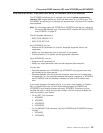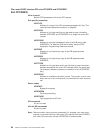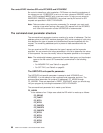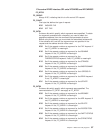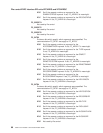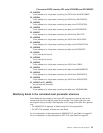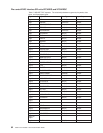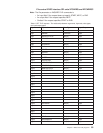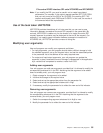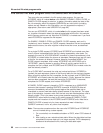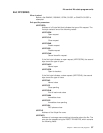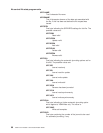FC_ADDR23
is the address of a 4-byte area containing the CVDA from BLOCKFORMAT.
FC_ADDR24
is the address of a 4-byte area containing the CVDA from KEYLENGTH.
FC_ADDR25
is the address of a 4-byte area containing the data from KEYPOSITION.
FC_ADDR26
is the address of a 4-byte area containing the data from RECORDSIZE.
FC_ADDR27
is the address of a 4-byte area containing the CVDA from RELTYPE.
FC_ADDR28
is the address of a 4-byte area containing the CVDA from EXCLUSIVE.
FC_ADDR29
is the address of a 4-byte area containing the data from BLOCKKEYLEN.
FC_ADDR30
is the address of a 4-byte area containing the data from BLOCKSIZE.
FC_ADDR31
is not used by file control.
FC_ADDR32
is not used by file control.
FC_ADDR33
is the address of a 4-byte area containing the CVDA from TABLE.
FC_ADDR34
is the address of a 4-byte area containing the data from MAXNUMRECS.
FC_ADDR35
is the address of a 4-byte area containing the CVDA from READINTEG.
FC_ADDR36
is the address of a 4-byte area containing the CVDA from RLSACCESS.
FC_ADDR37 to FC_ADDR51
are not used by file control.
FC_ADDR52
is the address of a 4-byte area containing the data from JOURNALNUM.
Modifying fields in the command-level parameter structure
Some fields that are passed to file control SPI requests are used as input to the
request and some are used as output to the request. The method that your user
exit program uses to modify a field depends on the usage of the field. As a general
rule:
v On INQUIRE FILE requests, all fields except FILE are output fields.
v On SET FILE requests, all fields are input fields.
For a full description of the parameters to INQUIRE FILE, see Table 5 on page 92.
For a full description of the parameters to SET FILE, see Table 6 on page 93.
File control EXEC interface SPI exits XFCAREQ and XFCAREQC
Chapter 1. Global user exit programs 91



